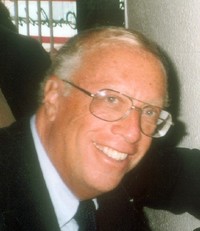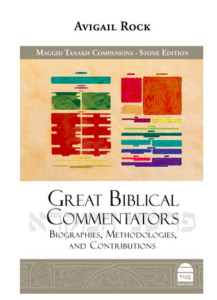By Rabbi Dr. Israel Drazin

BOCA RATON, Florida — Dr. Avigail Rock’s book (1971-2019) “Great Biblical Commentators,” is a very informative, eye-opening, thought-provoking introduction to 24 of the many rabbis and scholars who commented on the Tanakh, the Hebrew Bible. All of the many who did so could not be listed in the 426 easy-to-read pages, which contain the biographies, methodologies, and samples of their unique insights, teachings, and explanations. To do so would require a series of books many times the size of this volume. For example, Philo, one of the first philosophers of Judaism, who lived at the beginning of the Common Era and wrote extensively on the Bible, and Maimonides (1138-1204), whose many books explain the Bible, are not included. This, of course, does not detract from the importance of Dr. Rock’s book.
Dr. Rock’s book is essential because Bible commentaries cannot be understood if the reader does not know the commentator’s basic thinking. For example, Nachmanides, a mystic, felt that mysticism is true and the Tanakh is true, so the Tanakh must contain mysticism, and those who do not see and comprehend the mysticism in the Bible fail to understand it. To cite another example, Rashi felt that the moral lessons that the early rabbis derived from the biblical text were so significant that he inserted them into his commentaries even though the Bible’s wording does not even hint at the essential rabbinical teaching. In contrast, Rashi’s grandson, Rashbam, disagreed with his granddad and told him so. He, Maimonides, and others felt we must separate the rabbinical lessons and seek to understand the simple meaning of the biblical words.
 I enjoy Rashbam above all the other commentators Dr. Rock discusses. I understand that the ancient rabbis would agree with him. They taught that Jews should read the Torah twice in the Hebrew original and once in the Aramaic translation of Targum Onkelos. Why? I feel they are saying, we wrote Midrashim, which contains lessons Jews should know. But they should also know the plain meaning of the Torah. The Targum Onkelos translation has the plain meaning – with some differences, such as removing portrayals of God acting as a human.
I enjoy Rashbam above all the other commentators Dr. Rock discusses. I understand that the ancient rabbis would agree with him. They taught that Jews should read the Torah twice in the Hebrew original and once in the Aramaic translation of Targum Onkelos. Why? I feel they are saying, we wrote Midrashim, which contains lessons Jews should know. But they should also know the plain meaning of the Torah. The Targum Onkelos translation has the plain meaning – with some differences, such as removing portrayals of God acting as a human.
One may not agree with every interpretation of the 24 commentators. There are some that I disagree with. But this is fine. Scholars often disagree. What is important is that Dr. Rock is revealing much that Torah readers need to know. And even if they disagree here and there, they will learn much, very much, from this book.
The following is a tiny sampling of what Dr. Rock reveals. She mentions and agrees with my dating of Targum Onkelos. “Dr. Israel Drazin, an Onkelos scholar, claims that we should date Targum Onkelos around the year 400 CE.” She refers to my “Dating Targum Onkelos by Means of the Tannaitic Midrashim,” Journal of Jewish Studies 50, no. 2 (1999): 246-58.
Saadia Gaon, like Onkelos, avoids translating and literally explaining verses attributing physical characteristics to God. But he treats the substitutions differently. For example, in [Genesis] 17:22, the verse states, “And God went up, and [Saadia] renders, and the glory of God went up.” Maimonides rejected the idea that there was a divine “glory.” He felt that the glory seems to be a second deity. Maimonides’s fear was realized. The glory was called the “Shekinah,” the Presence during the Common Era. Many Jews, even rabbis, think of the Shekinah as a divine being separate from God.
Rashbam and Abraham ibn Ezra state that the plain meaning of the Bible’s command to put God’s teaching as “a sign on your arm” and “between your eyes” is not a command to wear tefillin. The tefillin command is rabbinical. The Torah only states that Jews should think about God’s commands whenever they do things or contemplate on something. Rashbam also said that while the current custom is to begin the day at sunset, the biblical day begins at daybreak. This is the plain meaning of Genesis 1:5 and similar verses, “And it was evening, and it was morning, one day.” A new day started at daybreak. Thus, according to the Torah, Shabbat begins on Saturday morning and ends on Sunday morning.
Nachmanides insisted that the land of Israel is holy, and God did not want Jacob to return from his 20-year absence from Israel married to two sisters, which violates later Torah law. So God killed the love of Jacob’s life, Rachael, to stop him from sinning. He also believed that all the biblical commands apply only in the holy land of Israel and need not be observed outside of Israel. The rabbis mandated that the biblical commands be observed even in the diaspora. He also insisted that there are two kinds of miracles, those that are evident such as the plagues that God used against the Egyptians, and hidden miracles, ongoing even today, such as causing leaves to fall and rain to descend.
Dr. Mordechai Breuer, a modern Orthodox rabbi (1921-2007), took the unusual approach of accepting the documentary hypothesis that the Torah is a compilation of several different documents written by authors in different historical eras. He explains Torah texts the scholars use to “prove” their view to fit with traditional Jewish thinking. For example, he contends that God included different versions of tales and laws in scripture to express different meanings and messages.